Heartbreak Ridge
7.6 /10 1 Votes
83% Rotten Tomatoes Writer James Carabatsos Language English | 6.8/10 IMDb 3/4 Roger Ebert Genre Action, Comedy, Drama Duration Country United States | |||||||||||||||||||||||||||||||||
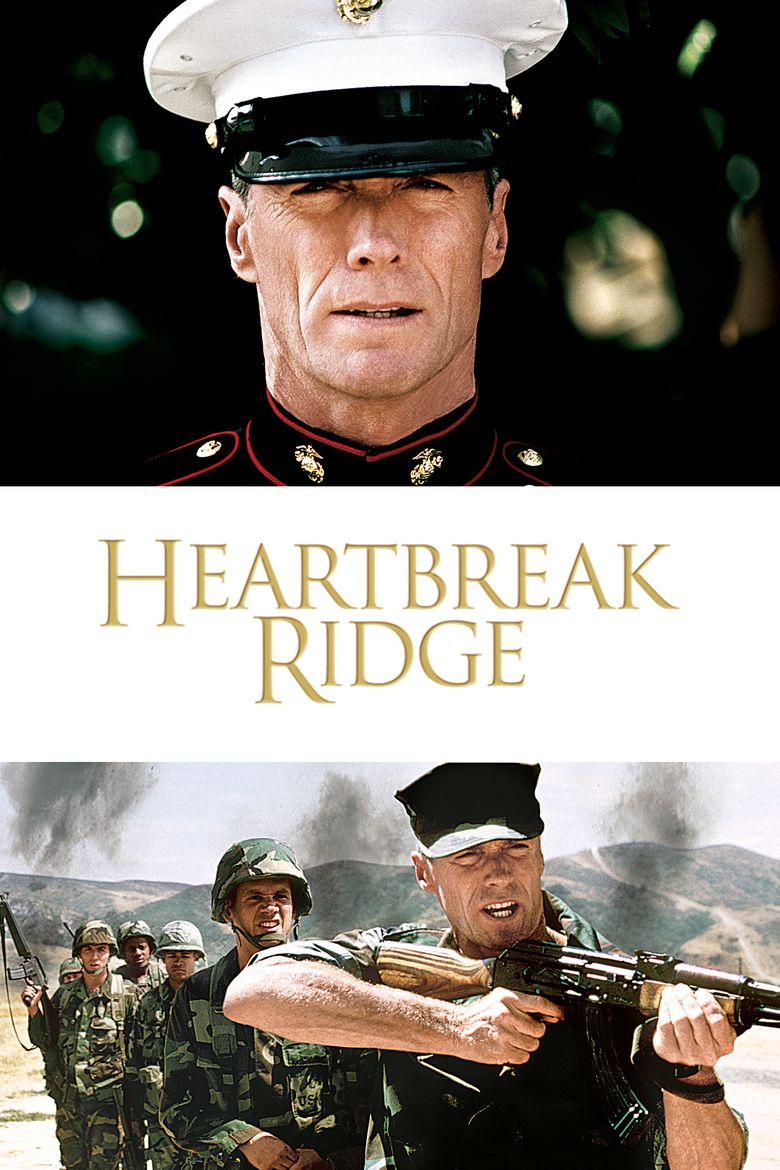 | ||||||||||||||||||||||||||||||||||
Release date December 5, 1986 (1986-12-05) Screenplay James Carabatsos, Joseph Stinson Cast (Gunnery Sgt. Tom 'Gunny' Highway), (Aggie), (Major Malcolm A. Powers), (Staff Sergeant Webster), (Corporal 'Stitch' Jones), (Little Mary Jackson) Similar movies Tagline ...the scars run deep. | ||||||||||||||||||||||||||||||||||
Heartbreak ridge 1986 official trailer clint eastwood drama movie hd
Heartbreak Ridge is a 1986 American Technicolor war film directed and produced by Clint Eastwood, who also starred in the film. The film also co-stars Mario Van Peebles, Marsha Mason, and Everett McGill. The film was released in the United States on December 5, 1986. The story centers on a U.S. Marine nearing retirement who whips a bunch of undisciplined Marines into shape and leads them during the American invasion of Grenada in 1983. A portion of the film was filmed on the island.
Contents
- Heartbreak ridge 1986 official trailer clint eastwood drama movie hd
- Heartbreak ridge theatrical movie trailer 1986
- Plot
- Cast
- Production
- Music and soundtrack
- Reviews
- Accolades
- Box office
- Home media
- References
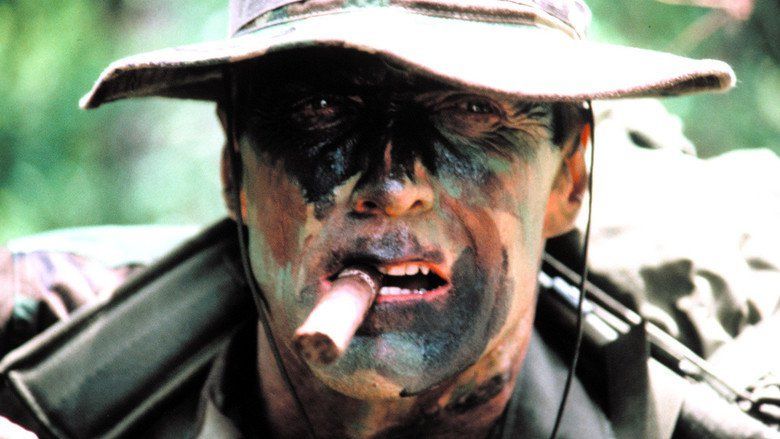
The title comes from the Battle of Heartbreak Ridge in the Korean War. The character played by Eastwood received the Medal of Honor for his actions in the conflict.
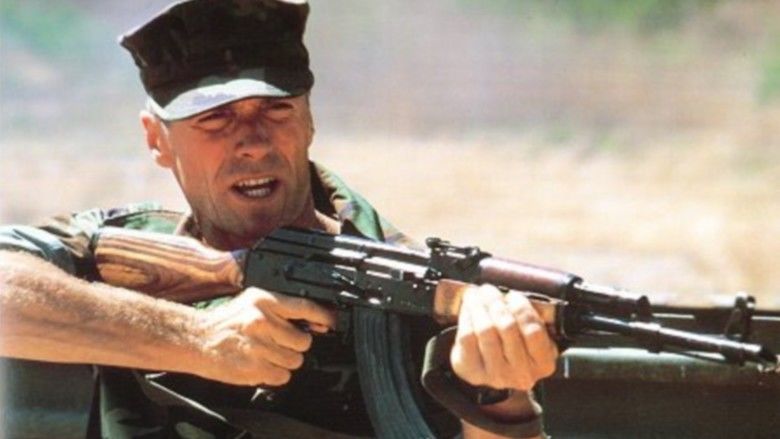
Heartbreak ridge theatrical movie trailer 1986
Plot
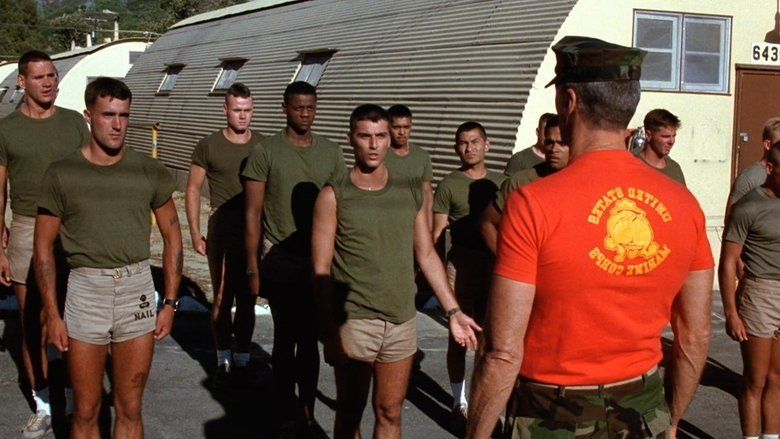
Gunnery Sergeant Thomas Highway is nearing mandatory retirement from the Marine Corps. He finagles a transfer back to his old unit, the Second Marine Division. On the bus trip to his new assignment, he meets fellow passenger "Stitch" Jones, a wannabe rock musician who borrows money from Highway for a meal at a rest stop and then steals his bus ticket, leaving him stranded.

When Highway finally arrives at the base, more bad news awaits. His new Operations Officer, Major Malcolm Powers, is an Annapolis graduate who transferred over from Supply and has not had "the privilege of combat." He sees Highway as an anachronism in the new Marine Corps, and assigns him to shape up the Reconnaissance Platoon. "Recon" is made up of undisciplined Marines who had been allowed to slack off by their previous platoon sergeant, an old veteran like Highway who was just about to retire. Among his new charges, Highway finds Corporal Jones. Highway quickly takes charge and starts the men on a rigorous training program. They make a last-ditch attempt to intimidate Highway with "Swede" Johanson, a gigantic, heavily-muscled Marine just released from the brig, but their plan fails miserably after Highway defeats Swede easily. They begin to shape up and develop esprit de corps.
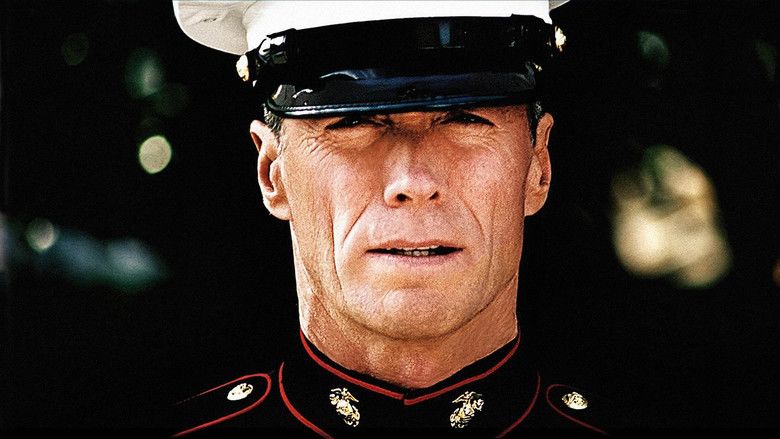
Highway repeatedly clashes with Powers and Staff Sergeant Webster over his unorthodox training methods (such as firing an AK-47 over his men's heads to familiarize them with the weapon's distinctive sound). Powers makes it clear that he views Highway's platoon as only a training tool for his own elite outfit. Major Powers goes so far as to make the Recon platoon lose in every field exercise. However, Highway is supported by his old comrade-in-arms, Sergeant Major Choozhoo, and his nominal superior officer, the college-educated but awkward and inexperienced Lieutenant Ring. After Jones learn that Highway had been awarded the Medal of Honor in the Korean War at Heartbreak Ridge, he tells the others and they gain respect for him and close ranks against their perceived common enemy.

Highway also has personal problems. Aggie, his ex-wife, is working as a waitress in a local bar and dating the owner, Marine-hater Roy Jennings. Highway attempts to adapt his way of thinking enough to win Aggie back, even resorting to reading Harpers Bazaar and Cosmopolitan to gain insights into the female mind. Initially, Aggie is bitter over their failed marriage, but tentatively reconciles with Highway. Then the 22nd Marine Amphibious Unit (Highway's outfit) is deployed for the invasion of Grenada.
After a last-minute briefing in the hangar bay of the amphibious assault ship USS Iwo Jima (LPH-2), Highway's platoon mounts their UH-1 Huey, and are dropped by helocast into the water in advance of the rest of the Battalion Landing Team. While advancing inland, they come under heavy fire. Highway improvises, ordering Jones to use a bulldozer to provide cover so they can advance and destroy an enemy machine gun nest. They subsequently rescue American students from a medical school. Later, when they are trapped in a building by enemy armor and infantry, radioman Profile is killed and his radio destroyed, cutting them off from direct communication. Lieutenant Ring shows initiative and comes up with the idea of using a telephone to make a long distance call to Camp Lejeune and call in air support.
After getting out of the jam on the hilltop, despite Powers' explicit orders to the contrary, Lieutenant Ring, Gunny Highway, and the Recon Platoon take out a key enemy position and capture the Cuban soldiers manning it. When Major Powers learns this, he bawls Ring and Highway out and threatens Highway with a court-martial, but their commanding officer, Colonel Meyers, arrives and reprimands Powers for discouraging the men's fighting spirit, calling Powers "a walking clusterfuck as an infantry officer," strongly suggesting he transfer back over to Supply.
When Highway and his men return to the U.S., they are met by a warm reception, complete with an honor guard and the division band. To Highway's mock dismay, Stitch Jones informs him that he is going to re-enlist and make a career in the Marine Corps, while Highway confides to Jones he is taking mandatory retirement. Aggie is there to welcome him back, and the two of them walk off together, followed by the other members of Recon along with their loved ones.
Cast
Production
Screenwriter James Carabatsos, a Vietnam veteran of the 1st Cavalry Division, was inspired by an account of American paratroopers of the 82nd Airborne Division using a pay telephone and a credit card to call in fire support during the invasion of Grenada, and fashioned a script of a Korean War veteran career Army non-commissioned officer passing on his values to a new generation of soldiers. Eastwood was interested in the script and asked his producer, Fritz Manes, to contact the US Army with a view of filming the movie at Fort Bragg.
However, the Army read the script and refused to participate, due to Highway being portrayed as a hard drinker, divorced from his wife, and using unapproved motivational methods to his troops, an image the Army did not want. The Army called the character a "stereotype" of World War II and Korean War attitudes that did not exist in the modern army and also did not like the obscene dialogue and lack of reference to women in the army. Eastwood pleaded his case to an Army general, contending that while the point of the film was that Highway was a throwback to a previous generation, there were values in the World War II and Korean War era army that were worth emulating.
Eastwood approached the United States Marine Corps, which expressed some reservations about some parts of the film, but provided support. The character was then changed to a Marine. (This raised some conceptual difficulties, given that the Battle of Heartbreak Ridge primarily involved the Army. This is explained very briefly in the film when Sergeant Major Choozoo tells Stitch Jones that he and Highway were in the 23rd Infantry Regiment at the time and "joined the Corps later.") The Marine Corps first cooperated with the film project by allowing much of the filming to be done at Camp Pendleton. The Marines planned to use it to promote its "Toys for Tots" campaign, but upon viewing a first cut, quickly disowned the film because of the language.
Marines who viewed the film cited numerous issues with the way they were portrayed. Major Powers, the battalion's S-3 Operations Officer, is repeatedly shown disparaging and insulting Gunny Highway, as well as showing blatant favoritism regarding "his" Marines of the First Platoon. In reality, this would have been extremely unlikely, given Highway's Medal of Honor. Much of the "training" done before the Grenada invasion was highly inaccurate, including the fact that Highway's Marine Recon unit did not have a Navy corpsman to deal with his men if injured. Even on a relatively small budget, the technical advice was poor. The Defense Department originally supported the film, but withdrew its backing after seeing a preview in November 1986. Eastwood was paid $6 million for directing and starring in the film.
Beginning in summer 1986, Heartbreak Ridge was filmed at Camp Talega (the location of the barracks), Chappo Flats (the location of the parachute rigging scene) and Mainside (the 1st Marine Division headquarters) on California's Camp Pendleton Marine Corps Base, the former campus of the San Diego Military Academy, SDMA Solana Beach and Puerto Rico's Vieques Island.
The sequence involving the bulldozer is based on a real event during the invasion of Grenada involving Army General John Abizaid, former commander of US Central Command. The American attack on Grenada is in some respects accurate, although it was really U.S. Army Rangers that secured the University Medical School. The scene in which Lieutenant Ring must resort to using a credit card in order to communicate with his commanders was also based on real-life events involving Army paratroopers.
The film was the 1000th to be released in Dolby Stereo.
Music and soundtrack
The score for the film was originally composed by American saxophonist Lennie Niehaus and Desmond Nakano. Actor Mario Van Peebles wrote "Bionic Marine" and "Recon Rap", and co-wrote "I Love You (But I Ain't Stupid)" with Desmond Nakano.
The final scene of the movie in which Highway's platoon returns to the United States features the 1st Marine Division Band (a fact which betrays the reality that the scene was filmed on the West Coast, not at Marine Corps Air Station Cherry Point in Havelock, North Carolina, where the scene takes place in the movie).
Reviews
Reaction to the film was generally positive. Among reviews, Roger Ebert of the Chicago Sun Times, gave the film three stars and noted how the movie has "as much energy and color as any action picture this year, and it contains truly amazing dialogue." Ebert also complimented director Eastwood mentioning how he "caresses the material as if he didn't know B movies have gone out of style." Paul Attanasio of the Washington Post agreed saying, "Those with an endless appetite for this sort of tough-man-tender-chicken melodrama will enjoy watching Clint go up against these young punks and outrun, outshoot, outdrink and outpunch them, in the process lending an idea of what it means to be a . . . Marine." Another Washington Post staff writer Rita Kempley, offered a different view, commenting that it was "always fun to see misguided machismo properly channeled into service of God, country or the National Hockey League. Isn't that the trouble with combat movies these days? From Top Gun to First Blood to Clint Eastwood's entertaining action drama Heartbreak Ridge, the empty-foxhole syndrome makes for non-endings." The staff at Variety, added to the encouraging reviews, saying that the film "offers another vintage Clint Eastwood performance. There are enough mumbled half-liners in this contemporary war pic to satisfy those die-hards eager to see just how he portrays the consummate marine veteran." Vincent Canby of The New York Times expressed his satisfaction with the film, writing that "Eastwood's performance is one of the richest he's ever given. It's funny, laid-back, seemingly effortless, the sort that separates actors who are run-of-the-mill from those who have earned the right to be identified as stars."
In terms of negative feedback, reviewer Derek Smith of the Apollo Movie Guide wrote that there was "not enough substance to Gunny to make him interesting enough to be the central character of a film, and since the movie offers nothing new or fresh, it just feels dull and uninteresting."
Accolades
The film won the BMI Film Music Award for Lennie Niehaus and the Image Award in the category of Outstanding Supporting Actor in a Motion Picture for Mario Van Peebles. The film also received a nomination, from the Academy Awards for Best Sound for Les Fresholtz, Dick Alexander, Vern Poore and Bill Nelson.
Box office
At its widest distribution in the U.S., the film was screened at 1,647 theaters grossing $8,100,840 in its opening weekend. During that first weekend, the film opened in second place behind Star Trek IV: The Voyage Home. Revenue dropped by 41% in its second week of release, earning $4,721,454. During its final weekend showing in theaters, the film grossed $1,040,729. It went on to take in a total of $42,724,017 in ticket sales during a seven-week theatrical run and a worldwide total of $121,700,000. It ranked 18th at the box office for 1986.
Home media
The film was initially released in VHS video format on April 1, 1992. The Region 1 Code widescreen edition of the film was released on DVD in the United States on October 1, 2002. The widescreen edition of the film was released on Blu-ray in the United States on June 1, 2010.
References
Heartbreak Ridge WikipediaHeartbreak Ridge IMDbHeartbreak Ridge Rotten TomatoesHeartbreak Ridge Roger EbertHeartbreak Ridge themoviedb.org
